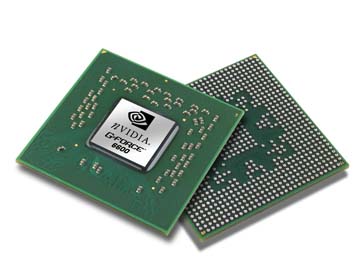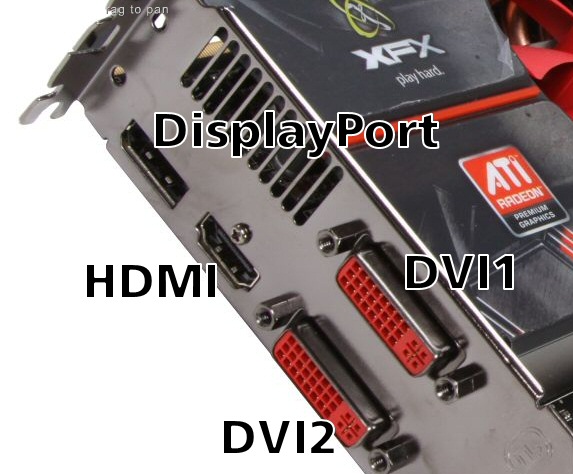What is a Graphics Card?
Graphics card is a hardware which is used to increase the video memory of a computer, and make its display quality more high-definition. It makes the computer more powerful and gives it the capacity to do more high-level works. The quality of the image depends on the quality of the graphics card. It is very much important for gaming and video editing on a PC. Every game needs a graphics memory to start and it depends on the type of the game, and the requirements are mentioned on the game box.
Example :
- Acer predator – Nvidia GTX 1050 4GB Graphics Card.
- Alienware 17 – Nvidia Geforce GTX 1070 8GB Graphics Card.
Both computers have a high power graphics card for better performance.
GPU :
- GPU stands for Graphics Processing Unit.
- The power of GPU depends on the model of the GPU.
- The graphics as an external component is attached on a slot known as an expansion slot.
- It is the brain of the graphics card and is what creates the visuals that we see on the monitor.
- Integrated – The graphics which are built into the motherboard are known as Integrated, are generally used in most laptops, the cannot be easily upgraded.
- Discrete – It is
an external graphics card which is a hardware and added on a motherboard as an
extra component. Most people may not need an external graphics card for their
work on PC. Basic work like creating files, doing office work, watching movies,
listing songs, etc may not need a graphics card. But for the users playing high
resolutions games and video editing may need an external component i.e graphics
card for their purpose.
Features
of Graphics Card:
- Memory – Graphics card carries its own memory. Memory range could be from 128MB to 2GB of memory. We should buy a card with more memory. More RAM equals higher resolutions, more colors on the screen, and the best special effects.
- Multiple Screen support – Most new video cards have the ability to connect two monitors to one card. This feature is very important for video editing and hardcore gamer craves that extra real estate as well. You can either see two separate Desktops or make the two monitors into one Desktop.
- Gaming And Video Editing –The discrete graphics card is not only for a gamer but those who use high-end video editing software also get help as a high-quality graphics card to reduce the rendering time of an image also give a high-def environment.
- Connection – he graphic card is connected to the monitor using many different ports put the port must be present on both monitor and Graphics card. These are some common ports used to connect graphics card with a monitor.
1. VGA
2. HDMI
3. DVI
Some motherboards have more than 1 expansion slot so we can add more than one graphics card to make performance better. Many laptops nowadays come with an integrated graphics card in them
Manufacturers of Graphics Card :
The two main manufacturers of discrete graphics card are –
1. NVIDIA
Major Components of a
Graphics Card
Here are the most important components of a
Graphics Card.
GPU (Graphics Processing Unit)

Graphics Processing Unit or commonly known
as GPU is the heart of the Graphics Card. It is the main component of the
graphics card where all the graphics processing takes place. Unlike CPU that
has only 2 – 16 cores, a GPU processor is made up of hundreds or thousands of
small cores or units that runs in parallel to perform complex graphics
operations. Nvidia called these cores or processors as Cuda Cores or Shaders
and AMD / ATI called them as Stream Processors.
It must be noted that cuda cores and
stream processors are not similar in size and operation because of the
different GPU architecture used by both these companies i.e. Nvidia and AMD.
That means if we have two graphics cards from both Nvidia and ATI with same
number of cuda cores and stream processors then we can say that
So here we can conclude that
the two graphics card performance will be different even if they have similar
memory specs and same number of cuda cores and stream processors
GPU Clock – The speed at which GPU runs is
called the GPU Clock or Frequency.
Shaders Clock / Frequency – The speed at which these cuda
cores / shaders runs are called shaders frequency and it is in synchronization
with the GPU clock.
Memory
Memory is the place where all the complex textures and other graphics information are stored. GPU fetches the textures from the memory, processes them, send it back to RAM and then it sends it to the RAMDAC and then to your LCD Screen or monitor.

RAMDAC is Random
Access Memory Digital to Analog Converter which converts the image to the
analog signal and sends them to your Monitor or LCD screen through display
cable.
Graphics Cards have
different types of memory depending upon the GPU used in the graphics card. The
most common type of memories used in graphics cards are GDDR3 and GDDR5 RAM,
where G stands for Graphics and DDR stands for Double Data Rate. Graphics Card
RAM or Memory is much faster than the Memory used in your Desktop or Laptop.
Internal Interface
The internal interface is the
one through which your Graphics Card connects to your motherboard. Older
graphics cards uses AGP (Accelerated Graphics Port) interface to connect to the
motherboard but now it has been replaced by much faster and efficient PCI
Express 2.0 x16 interface. The motherboard should also have the PCI Express x16
slot otherwise you will not be able to use the card. Some motherboards have two
PCI Express x16 slots side by side, so that you can use graphics cards
connected in SLI or Crossfire mode for increased performance.
Heat Sink and Fan
Heat sink and Fan
forms the cooling part of the graphics card, which are used to lower down the temperature of GPU and RAM (in some cards). Heat sink is a passive cooling device that is made up of copper or aluminum and
its main purpose is to take the heat away from the GPU and dissipates it in the
surroundings. Fan is an active cooling device that blows air onto the heat sink to make heat sink cool down faster so that it can draw away the heat quickly
from the components. Some low end graphics cards are equipped with only heat sink but the all the mid and high range ones have both heat sink and fan
combination for proper and efficient cooling.
Power Connectors (6-pin)
If your SMPS or Power
Supply does not have the 6-pin power connector then you will need the 6-pin
power connector cable as shown in the picture below.
DVI / HDMI / VGA Ports
All these components
are embedded on the PCB (Printed Circuit Board), which you can say forms the
motherboard of a Graphics Card. Besides all these major components, other
smaller components like capacitors, diodes, resistors etc. are also present on
a graphics card.







Post a Comment
If you have any doubts, please let me know